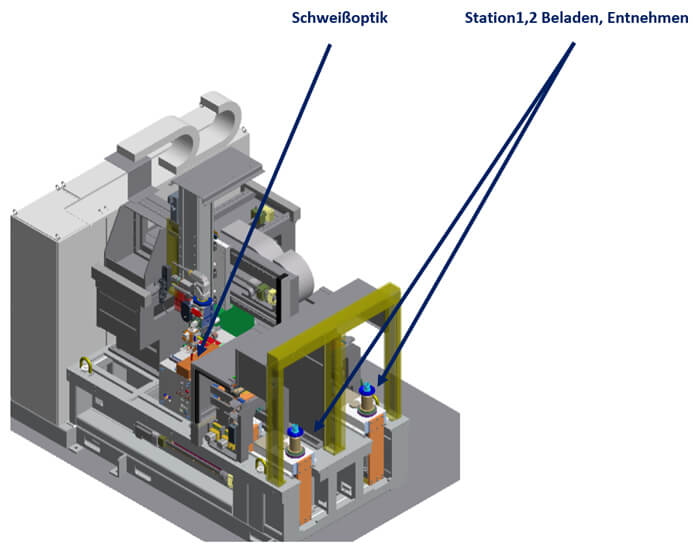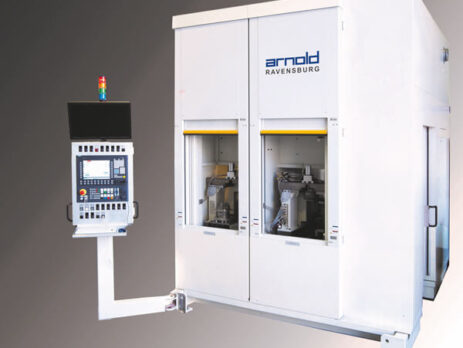Laser welding system
The core process for the differential housing/crown wheel connection is laser welding. Usually delivers on this task ARNOLD RAVENSBURG a 2-station welding system due to shorter cycle times and greater flexibility. While the workpieces are being loaded (removed), clamped and moved to the welding position at one station, the machining process can be carried out parallel to main time in the other station.

The processing optics move horizontally to the respective welding position. Since differentials are to be welded axially and radially in some designs, we can swivel our optics steplessly in the standard in order to also carry out lateral welds. Overall, this can be done at the double station up to 10 NC axes result.
Due to the material combination steel/cast iron and a notch at the welding position, the differentials in almost all of our systems are supplied with a combination of laser beam and wire feeder welded.
Quality monitoring
The ready-welded differentials are expensive components in comparison. For this reason, the manufacturers want to test as few of them as possible with destructive section evaluations for random quality control.
Alternative quality monitoring with direct observation of the weld seam are online monitoring systems, which evaluate changes in the welding process, for example in the plasma. These changes are then analyzed and, if tolerable limits are exceeded, an error message is displayed to the operator or the system is stopped so that the faults can be checked. Another variant are camera systems that check the weld seam contour beforehand and afterwards.
Both quality monitoring systems are difficult to set up and require the support of the manufacturer.

